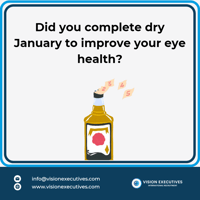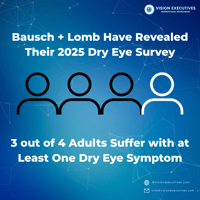𝐈𝐧𝐧𝐨𝐯𝐚𝐭𝐢𝐨𝐧𝐬 𝐢𝐧 𝐃𝐫𝐲 𝐄𝐲𝐞 𝐓𝐡𝐞𝐫𝐚𝐩𝐲: 𝐍𝐞𝐰 𝐒𝐨𝐥𝐮𝐭𝐢𝐨𝐧𝐬 𝐟𝐫𝐨𝐦...
𝐃𝐫𝐲 𝐉𝐚𝐧𝐮𝐚𝐫𝐲: 𝐀 𝐒𝐭𝐞𝐩 𝐭𝐨 𝐑𝐞𝐝𝐮𝐜𝐞 𝐃𝐫𝐲 𝐄𝐲𝐞 𝐑𝐢𝐬𝐤
🍷 For many, Dry January is an opportunity to reset and focus on health by abstaining from alcohol. But did you know it could also benefit your eye health? A recent article from Ophthalmology Times highlights how reducing alcohol consumption may lower the risk of dry eye disease, especially for women.
🍺 Studies suggest that alcohol can dehydrate the body, leading to reduced tear production and worsening dry eye symptoms. Women, in particular, are at higher risk of dry eye disease due to hormonal differences, making lifestyle changes like Dry January an impactful preventative measure.
In addition to cutting alcohol, the article recommends other tips for dry eye relief:
👁 Stay hydrated: Drink plenty of water daily.
👁 Eat omega-3s: Incorporate fatty acids found in fish and flaxseed into your diet.
👁 Protect your eyes: Use humidifiers and take breaks from screens.
🥂 Dry eye is a common condition that can significantly impact quality of life. Participating in Dry January offers a chance to improve overall health while giving your eyes a much-needed break.


